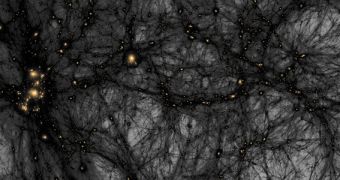In early 2014, China will inaugurate the world's most ambitious dark matter experiment, called Particle and Astrophysical Xenon (PandaX). The installation is buried deep underneath 2.4 kilometers (1.5 miles) of solid rock, in the heart of a mountain located in the Sichuan province.
The instrument will be focused on searching for, identifying and analyzing weakly interacting massive particles (WIMP), a class of particles believed to make up dark matter. Theory holds that WIMP do not interact with baryonic matter except through gravitational pulls. Dark matter is believed to make up about 24 percent of the Universe's mass-energy budget, whereas normal matter accounts for just 4 percent, Space reports.
The reason why PandaX is buried so deep beneath the surface is to provide it with an additional layer of insulation against other elementary particles that may set off false-positive readings. The rock basically acts like a filter to ensure that only WIMP detections are signaled in the machine.
As its name implies, the experiment will feature a very large container filled with ultra-cold, liquid xenon. Whenever a WIMP interacts with a xenon atom – an occurrence that is predicted to be extremely rare – the two will interact to form particles that can be detected by PandaX. The earliest results from the experiment are expected to arrive by December 2014.

 14 DAY TRIAL //
14 DAY TRIAL //